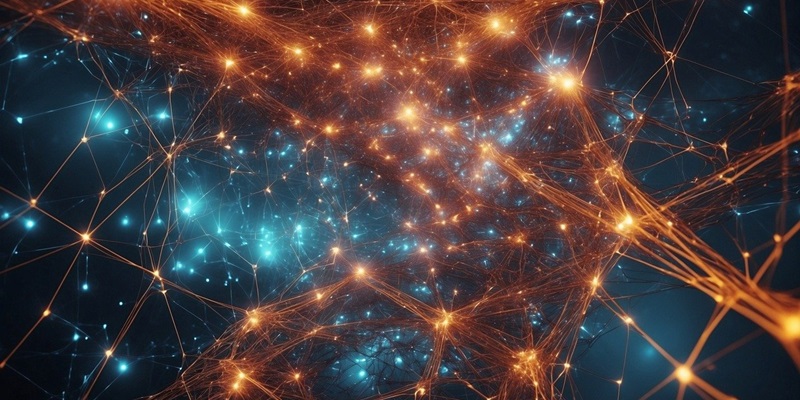Generative Adversarial Networks (GANs) have emerged as a groundbreaking force in artificial intelligence. These complex systems pit two models against one another: a generator, which crafts new data instances, and a discriminator, which evaluates their authenticity. This dynamic process enables GANs to produce remarkably refined outputs, pushing the boundaries of AI’s creative and analytical capabilities.
Their versatility has wide applications, from generating photorealistic images to advancing drug discovery. By essentially learning from an ongoing competition, GANs continually evolve, leading to more nuanced and sophisticated models. Such progress underscores the transformative impact of GANs on AI, making them integral to both technological advancement and creative exploration. This revolutionary AI framework is not just enhancing existing industries but also creating new possibilities previously unimagined.
Understanding Generative Adversarial Networks
The Basics of GAN Architecture
The core of GANs lies in their dual-structured architecture, comprising two neural networks: one that generates and another that discriminates. The generative model, often called the generator, is designed to produce data that mimic real-world phenomena, while the discriminator assesses that data, determining if it’s a true instance or an artificial creation from the generator. This iterative confrontation drives the generator to improve its fabrications progressively until they become indistinguishable from reality to the discriminator.
GANs epitomize a dynamic battlefield where creation and critique go hand in hand. The discriminator’s error rates feed back to the generator, which learns from its mistakes, honing its synthetic outputs. Through continuous cycles of generation and discrimination, GANs refine their output, leading to increasingly sophisticated data representations.
Differentiating GANs from Traditional Models
Unlike traditional discriminative models that dominate machine learning (ML) landscapes by predicting labels based on input data, GANs embody a generative approach. They do not merely assign categories; instead, they learn the underlying distribution of data and spawn new instances from that learned space. This quality equips GANs for excellence within unsupervised learning frameworks, especially when dealing with unstructured and unlabeled datasets—a common scenario in real-world applications.
GANs have revolutionized our understanding of how neural networks can function by not simply interpreting inputs but by building new data that reflect complex underlying patterns. They capture the very essence of data distribution, allowing them to generate not just plausible but often indistinguishable replicas of the original datasets.
GANs in Action: Real-World Applications
Revolutionizing Content Creation
Generative Adversarial Networks (GANs) are transforming the digital realm with their power to craft strikingly realistic images and videos. They produce faces of people who don’t exist, generate lifelike virtual environments, and craft intricate art indistinguishable from what’s real to the untrained eye. This technological marvel blurs the lines between actuality and fabrication, raising significant ethical and legal debates.
While GANs spell potential for misuse, such as creating misleading content, they also have immense positive potential. They can revolutionize education with realistic simulations and enhance entertainment through rich multimedia content. The moral considerations around GANs are complex, reflecting the duality of their capacity to either deceive or educate and entertain in previously unimagined ways.
Enhancing Creative Processes
Generative Adversarial Networks (GANs) have emerged as an inexhaustible wellspring of creativity, revolutionizing artistic expression by mastering style transfers and generating novel art pieces. As digital muses, they empower artists to transcend their limitations in skill and imagination, democratizing the creative process. By enabling artists to harness an algorithmic perspective, GANs enrich the artistic workflow, fostering a symbiotic relationship that pushes the envelope of digital innovation. The influence of these algorithms extends beyond toolsets; they are collaborators, catalyzing a new era of exploration and unprecedented experimentation in the arts. This AI-driven renaissance is redefining the possibilities of creative endeavor, marrying technology with the traditional muse’s inspiration.
Expanding the Boundaries of AI with GANs
Beyond Pattern Recognition
Generative Adversarial Networks (GANs) mark a significant evolution in artificial intelligence, transcending conventional tasks such as recognizing patterns and forecasting. Unlike their predecessors, GANs don’t just make sense of the data they’re given; they contribute original creations to it. They signify a revolution in AI, equipping machines with the capability to not only dissect but also to originate new concepts. GANs are essentially imbuing AI with a creative agency—historically attributed to human intelligence alone.
This transformative shift in AI introduces an ability to fabricate content, effectively mirroring human-like creativity. Consequently, GANs portend a future where AI can independently generate, design, and innovate, assuming roles akin to a digital artist or an engineer. The integration of imaginative processes suggests a future where machine learning is not just reactive to existing data but is proactive in generating new, unique instances, heralding an era where the creative spark is no longer a human monopoly.
Prospects for Future Innovations
Generative Adversarial Networks (GANs) hold the promise of profound innovation across multiple sectors, including breakthroughs in pharmaceuticals and environmental science. As researchers strive to enhance their stability and dependability, the scope of GAN applications continues to expand. Tackling current limitations could lead to an exponential growth in GAN utility.
The trajectory of GANs suggests a seismic shift in the near future, impacting numerous industries and possibly giving rise to new fields of technological pursuit. With continued advancements, they might fundamentally alter the intersection of artificial intelligence and human ingenuity. As we edge closer to surmounting present hurdles, the potential of GANs is vast, poised to influence an era of artificial intelligence that augments the spectrum of human capabilities.

